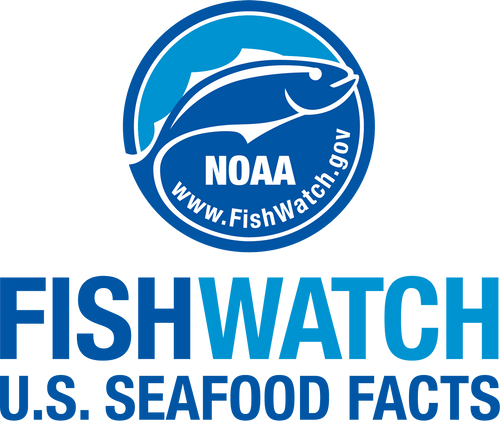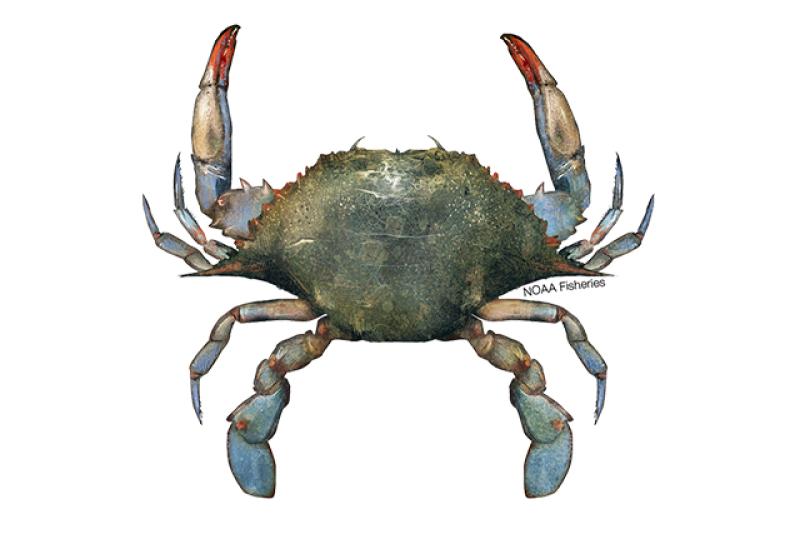 Caribbean spiny lobster. Credit: NOAA Fisheries
Caribbean spiny lobster. Credit: NOAA Fisheries
Caribbean spiny lobster. Credit: NOAA Fisheries
About the Species
 Caribbean spiny lobster. Credit: NOAA Fisheries
Caribbean spiny lobster. Credit: NOAA Fisheries
Caribbean spiny lobster. Credit: NOAA Fisheries
U.S. wild-caught Caribbean spiny lobster is a smart seafood choice because it is sustainably managed and responsibly harvested under U.S. regulations.

Population
The Puerto Rico, St. Thomas/St. John, and St. Croix stocks are not overfished. The population level of the South Atlantic/Gulf of Mexico stock is unknown, but management measures are in place.

Fishing Rate
The St. Thomas/St. John, St. Croix, and South Atlantic/Gulf of Mexico stocks are not subject to overfishing. The Puerto Rico stock is reduced to end overfishing.

Habitat Impact
Lobster trap closures are in place in some areas to prevent damage to ocean bottom habitat.

Bycatch
Regulations are in place to minimize bycatch.
Population Status
- There are four stocks of Caribbean spiny lobster: the South Atlantic/Gulf of Mexico stock, and three stocks in the Caribbean—the Puerto Rico, St. Thomas/St. John, and St. Croix stocks. According to the most recent stock assessments:
- The South Atlantic/Gulf of Mexico stock is not subject to overfishing and the population status is unknown (2005 stock assessment). Summary stock assessment information can be found on Stock SMART.
- The Puerto Rico stock is subject to overfishing and not overfished (2022 stock assessment). Summary stock assessment information can be found on Stock SMART.
- The St. John/St. Thomas stock is not subject to overfishing and not overfished (2020 stock assessment). Summary stock assessment information can be found on Stock SMART.
- The St. Croix stock is not subject to overfishing and not overfished (2020 stock assessment). Summary stock assessment information can be found on Stock SMART.
Appearance
- Caribbean spiny lobsters get their name from forward-pointing spines that cover their bodies to help protect them from predators.
- They have a reddish brown shell, marked with occasional dark spots and two large, cream-colored spots on the top of the second segment of the tail.
- They have long, horn-like antennae over their eyes that they wave to scare off predators, and smaller antennae-like “antennules” that sense movement and detect chemicals in the water.
- Unlike the American lobster, they lack large front claws.
- They are harvested for their tail meat. Items marketed as “lobster tail” are usually from spiny lobster.
Biology
- Caribbean spiny lobsters grow by molting—they vacate their old shells while simultaneously absorbing water, expanding their body size. They molt about 25 times in their first 5 to 7 years of life, and once per year when they’re older. It takes them about 2 years to grow to the 3-inch carapace (shell) legal-harvesting size.
- Spiny lobsters may live 15 years or more, but there is uncertainty regarding this estimate due to the difficulty in ageing this species.
- They can grow up to 15 pounds and 18 inches.
- Females can reproduce when they reach 2.75 to 3 inches carapace length in the southeastern United States, and 3.6 inches in the Caribbean.
- They spawn from March through August in the Florida Keys on offshore reefs, and spawn throughout the year in the Caribbean.
- The male spiny lobster deposits sperm packets on the underside of the female. She scratches them to release sperm as she releases her eggs (between 230,000 to 2.6 million eggs each time they spawn, depending on her size). The female carries the fertilized eggs beneath her tail, and is referred to as “berried.” The eggs hatch in about 3 weeks.
- Most of the spiny lobster larvae found in U.S. waters are from upstream sources in the Caribbean.
- Young spiny lobsters feed on soft-bodied plankton (tiny floating plants and animals).
- Juveniles and adults are carnivores, preying on snails, crabs, and clams. They are nocturnal, inhabiting coral reefs, burrows, and dens during the day and foraging for food at night.
- Many predators feed on juvenile and adult spiny lobster, including groupers, snappers, sharks, skates, turtles, and octopuses.
Where They Live
Range
- Caribbean spiny lobster are found along the continental shelf of the southeastern United States from North Carolina to Texas, in Bermuda, throughout the Caribbean Sea, and south to Brazil.
Habitat
- Caribbean spiny lobster live in shallow waters to depths of 295 feet, and occasionally deeper.
- Larval spiny lobster float in the water column.
- As they grow, they swim to nearshore habitats and settle in dense vegetation, especially among macroalgae. They live there until they reach about 0.6 to 0.8 inches, then find shelter in crevices provided by large sponges, octocorals (soft corals), and solution holes until they are about 1.5 inches long.
- When they reach 2 to 3.15 inches, they travel from their nearshore nursery habitat to shallow banks in nearshore waters.
- As mature adults, they inhabit bays, estuarine areas, coral reefs and other offshore habitats, but are found on softbottom and seagrass during migratory periods.
- Adults move along shore and offshore seasonally, migrating in single-file lines to deeper water to escape cold and turbid waters.
Fishery Management
- NOAA Fisheries, the Florida Fish and Wildlife Conservation Commission, the governments of Puerto Rico and the U.S. Virgin Islands, and the South Atlantic, Gulf of Mexico, and Caribbean Fishery Management Councils manage the Caribbean spiny lobster fishery.
- In the South Atlantic and Gulf of Mexico, managed under the Fishery Management Plan for the Spiny Lobster in the Gulf of Mexico and South Atlantic and the Florida Fish and Wildlife Conservation Commission Commercial Regulations for Spiny Lobster:
- Streamlined management measures that extend regulations in Florida state waters into federal waters.
- Fishermen must have a permit to harvest spiny lobster.
- Annual catch limits in place.
- Bag limits for commercial and recreational fishermen, depending on where they are harvested.
- Fishing season closed from April 1 through August 5 off Florida and the Gulf states to protect spiny lobsters during peak spawning season.
- Prohibition on harvesting and importing egg-bearing females or females that have been stripped of eggs.
- Minimum size limits on harvested and imported lobsters to allow them to spawn before they are harvested.
- Prohibition on spears, hooks, piercing devices, explosives, or poisons to harvest spiny lobster. Non-wooden traps must have biodegradable escape panels.
- Harvest is prohibited at all times in several marine protected areas in southern Florida.
- Closed areas in the Florida Keys to protect threatened species of coral that can be damaged by fishing gear.
- Prohibition on imports of spiny lobster tail meat that is not in whole-tail form with the exoskeleton (shell) attached.
- Prohibition on the use of traps for the recreational harvest of spiny lobster in federal waters off North Carolina, South Carolina, Georgia, and Florida.
- In the U.S. Caribbean, managed under the Puerto Rico Fishery Management Plan, the St. Croix Fishery Management Plan, and the St. Thomas and St. John Fishery Management Plan:
- Annual catch limits in federal waters in Puerto Rico, St. Croix, and St. Thomas/St. John.
- Minimum size limit of 3.5 inches, which allows the lobsters a chance to spawn before they are harvested.
- Bag limits for recreational harvest in federal waters of the U.S. Caribbean of 3 per person/day, not to exceed 10 per vessel/day, whichever is less.
- Prohibition on spears, hooks, piercing devices, explosives, or poisons to harvest spiny lobster.
- Prohibition on the use of gillnets and trammel nets in federal waters to harvest spiny lobster.
- Traps, pots, buoys, and boats should be identified and marked and all traps must have biodegradable escape panels.
- Fishermen may not bring egg-bearing female lobsters aboard a vessel (they may be kept in pots or traps until the eggs are shed).
- Spiny lobsters must be whole when they are brought to port.
- Similar restrictions on importing spiny lobsters.
Harvest
- In 2022, landings of Caribbean spiny lobster in the Gulf of Mexico and South Atlantic totaled approximately 5.5 million pounds and were valued at $43.3 million, according to the NOAA Fisheries commercial fishing landings database.
- Gear types, habitat, and bycatch:
- Commercial fishermen harvest spiny lobsters either by diving, bullynetting, or using wooden, plastic, or metal traps.
- Bullynetting is conducted in shallow waters at night when lobster are foraging for food or migrating offshore. A vessel uses a spotlight to find the lobster and then uses a “bullynet” to harvest the lobster.
- Buoys are attached to each trap, or if stringing a trap line, at each end of the trap line. Commercial traps are weighted with cement and must have a degradable escape panel to prevent “ghost fishing” (when a lost or abandoned trap continues to capture lobsters or other species).
- The State of Florida runs two programs dedicated to removing lost and abandoned traps from state waters and has the authority to expand those programs into federal waters.
- Fishermen generally use undersized lobster (known as “shorts”) as bait to attract legal-sized lobsters into their traps. Mortality of these undersized lobsters is around 10 percent.
- Traps sometimes incidentally catch reef fish and ornamental fish, but most are released alive. Threatened or endangered species, such as sea turtles and corals, occasionally become entangled in trap lines.
- Recreational anglers harvest spiny lobsters primarily by snorkeling or scuba diving. Undersized lobsters must be released unharmed immediately without removal from water.
Scientific Classification
- Caribbean spiny lobster are found along the continental shelf of the southeastern United States from North Carolina to Texas, in Bermuda, throughout the Caribbean Sea, and south to Brazil.
- Caribbean spiny lobster live in shallow waters to depths of 295 feet, and occasionally deeper.
- Larval spiny lobster float in the water column.
- As they grow, they swim to nearshore habitats and settle in dense vegetation, especially among macroalgae. They live there until they reach about 0.6 to 0.8 inches, then find shelter in crevices provided by large sponges, octocorals (soft corals), and solution holes until they are about 1.5 inches long.
- When they reach 2 to 3.15 inches, they travel from their nearshore nursery habitat to shallow banks in nearshore waters.
- As mature adults, they inhabit bays, estuarine areas, coral reefs and other offshore habitats, but are found on softbottom and seagrass during migratory periods.
- Adults move along shore and offshore seasonally, migrating in single-file lines to deeper water to escape cold and turbid waters.
Fishery Management
- NOAA Fisheries, the Florida Fish and Wildlife Conservation Commission, the governments of Puerto Rico and the U.S. Virgin Islands, and the South Atlantic, Gulf of Mexico, and Caribbean Fishery Management Councils manage the Caribbean spiny lobster fishery.
- In the South Atlantic and Gulf of Mexico, managed under the Fishery Management Plan for the Spiny Lobster in the Gulf of Mexico and South Atlantic and the Florida Fish and Wildlife Conservation Commission Commercial Regulations for Spiny Lobster:
- Streamlined management measures that extend regulations in Florida state waters into federal waters.
- Fishermen must have a permit to harvest spiny lobster.
- Annual catch limits in place.
- Bag limits for commercial and recreational fishermen, depending on where they are harvested.
- Fishing season closed from April 1 through August 5 off Florida and the Gulf states to protect spiny lobsters during peak spawning season.
- Prohibition on harvesting and importing egg-bearing females or females that have been stripped of eggs.
- Minimum size limits on harvested and imported lobsters to allow them to spawn before they are harvested.
- Prohibition on spears, hooks, piercing devices, explosives, or poisons to harvest spiny lobster. Non-wooden traps must have biodegradable escape panels.
- Harvest is prohibited at all times in several marine protected areas in southern Florida.
- Closed areas in the Florida Keys to protect threatened species of coral that can be damaged by fishing gear.
- Prohibition on imports of spiny lobster tail meat that is not in whole-tail form with the exoskeleton (shell) attached.
- Prohibition on the use of traps for the recreational harvest of spiny lobster in federal waters off North Carolina, South Carolina, Georgia, and Florida.
- In the U.S. Caribbean, managed under the Puerto Rico Fishery Management Plan, the St. Croix Fishery Management Plan, and the St. Thomas and St. John Fishery Management Plan:
- Annual catch limits in federal waters in Puerto Rico, St. Croix, and St. Thomas/St. John.
- Minimum size limit of 3.5 inches, which allows the lobsters a chance to spawn before they are harvested.
- Bag limits for recreational harvest in federal waters of the U.S. Caribbean of 3 per person/day, not to exceed 10 per vessel/day, whichever is less.
- Prohibition on spears, hooks, piercing devices, explosives, or poisons to harvest spiny lobster.
- Prohibition on the use of gillnets and trammel nets in federal waters to harvest spiny lobster.
- Traps, pots, buoys, and boats should be identified and marked and all traps must have biodegradable escape panels.
- Fishermen may not bring egg-bearing female lobsters aboard a vessel (they may be kept in pots or traps until the eggs are shed).
- Spiny lobsters must be whole when they are brought to port.
- Similar restrictions on importing spiny lobsters.
Harvest
- In 2022, landings of Caribbean spiny lobster in the Gulf of Mexico and South Atlantic totaled approximately 5.5 million pounds and were valued at $43.3 million, according to the NOAA Fisheries commercial fishing landings database.
- Gear types, habitat, and bycatch:
- Commercial fishermen harvest spiny lobsters either by diving, bullynetting, or using wooden, plastic, or metal traps.
- Bullynetting is conducted in shallow waters at night when lobster are foraging for food or migrating offshore. A vessel uses a spotlight to find the lobster and then uses a “bullynet” to harvest the lobster.
- Buoys are attached to each trap, or if stringing a trap line, at each end of the trap line. Commercial traps are weighted with cement and must have a degradable escape panel to prevent “ghost fishing” (when a lost or abandoned trap continues to capture lobsters or other species).
- The State of Florida runs two programs dedicated to removing lost and abandoned traps from state waters and has the authority to expand those programs into federal waters.
- Fishermen generally use undersized lobster (known as “shorts”) as bait to attract legal-sized lobsters into their traps. Mortality of these undersized lobsters is around 10 percent.
- Traps sometimes incidentally catch reef fish and ornamental fish, but most are released alive. Threatened or endangered species, such as sea turtles and corals, occasionally become entangled in trap lines.
- Recreational anglers harvest spiny lobsters primarily by snorkeling or scuba diving. Undersized lobsters must be released unharmed immediately without removal from water.
Scientific Classification
| Kingdom | Animalia | Phylum | Arthropoda | Class | Malacostraca | Order | Decapoda | Family | Palinuridae | Genus | Panulirus | Species | argus |
|---|
Last updated by NOAA Fisheries on 10/09/2024
Featured News
 A NOAA diver surveys a coral reef. Credit: National Park Service/Rob Waara
A NOAA diver surveys a coral reef. Credit: National Park Service/Rob Waara
 Officers found thousands of pounds of imported lobster that were repackaged into boxes labeled as products of the U.S.A.
Officers found thousands of pounds of imported lobster that were repackaged into boxes labeled as products of the U.S.A.
Seafood Facts

Is Caribbean Spiny Lobster Sustainable?
U.S. wild-caught Caribbean spiny lobster is a smart seafood choice because it is sustainably managed and responsibly harvested under U.S. regulations.
Availability
Fresh from August through March, but fishing drops sharply after the first of the year. Frozen year-round.
Source
U.S. wild-caught from North Carolina to Texas, Puerto Rico, and the U.S. Virgin Islands.
Taste
Mild and sweet.
Texture
Firm. Coldwater tails tend to be more tender and succulent than warmwater tails.
Color
Raw tail meat is nearly translucent, with a pink, cream, or whitish-gray tint. Cooked tail meat should be snowy white with red tinges but no dark spots.
Health Benefits
Spiny lobster is low in saturated fat and is a very good source of protein and selenium.
Nutrition Facts
Servings: 1; Serving Weight: 100 g (raw); Calories: 112; Protein: 20.60 g; Total Fat: 1.51 g; Total Saturated Fatty Acids: 0.237 g; Carbohydrate: 2.43 g; Total Sugars: 0 g; Total Dietary Fiber: 0 g; Cholesterol: 70 mg; Selenium: 46.2 mcg; Sodium: 177 mgMore Information
Last updated by NOAA Fisheries on 10/09/2024
Seafood News
 A signboard thanking patrons at Tuna Harbor Dockside Market in San Diego. Credit: Tuna Harbor Dockside Market.
A signboard thanking patrons at Tuna Harbor Dockside Market in San Diego. Credit: Tuna Harbor Dockside Market.
 Credit: NOAA Fisheries/Brianna Shaughnessy
Credit: NOAA Fisheries/Brianna Shaughnessy
 An oyster reef with lush greenery in the background. Credit: Adobe Stock
An oyster reef with lush greenery in the background. Credit: Adobe Stock
Last updated by NOAA Fisheries on 10/09/2024





